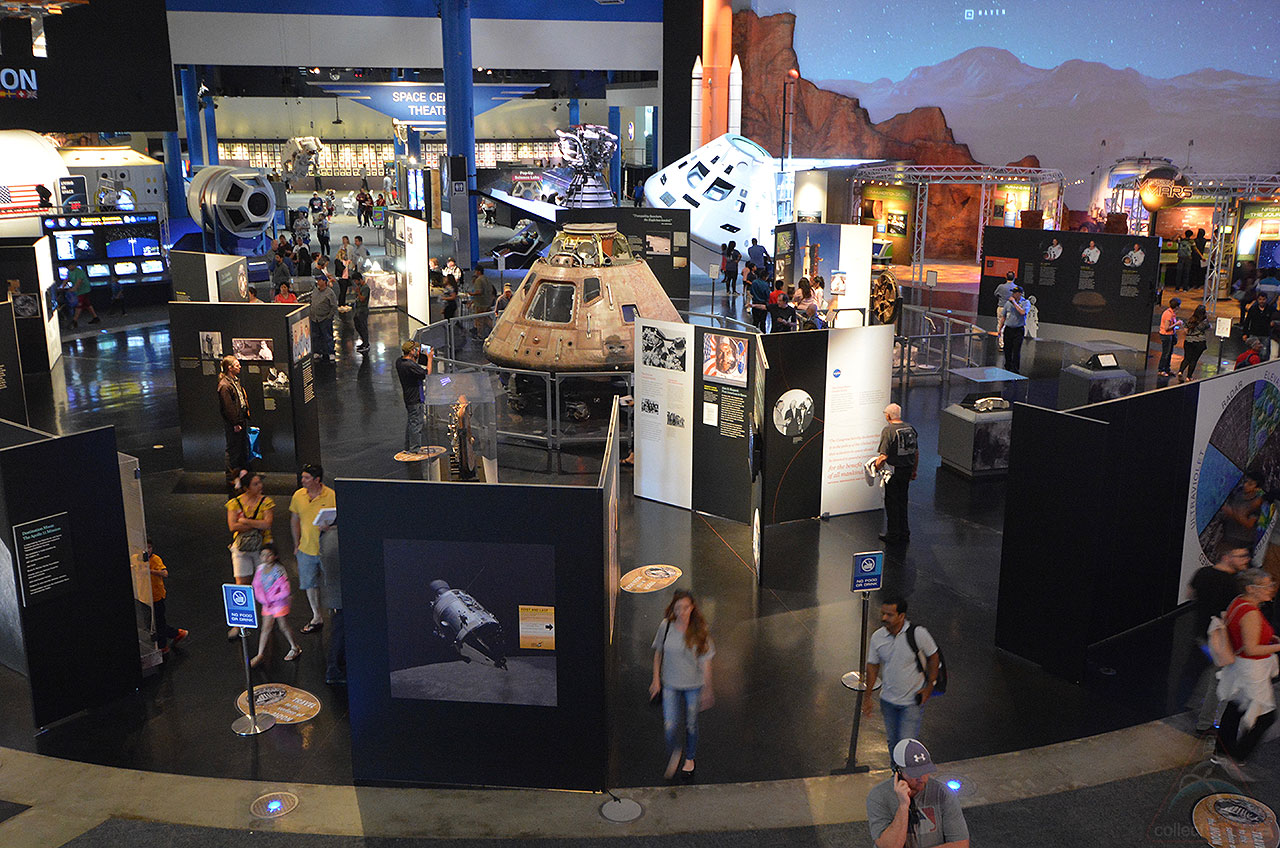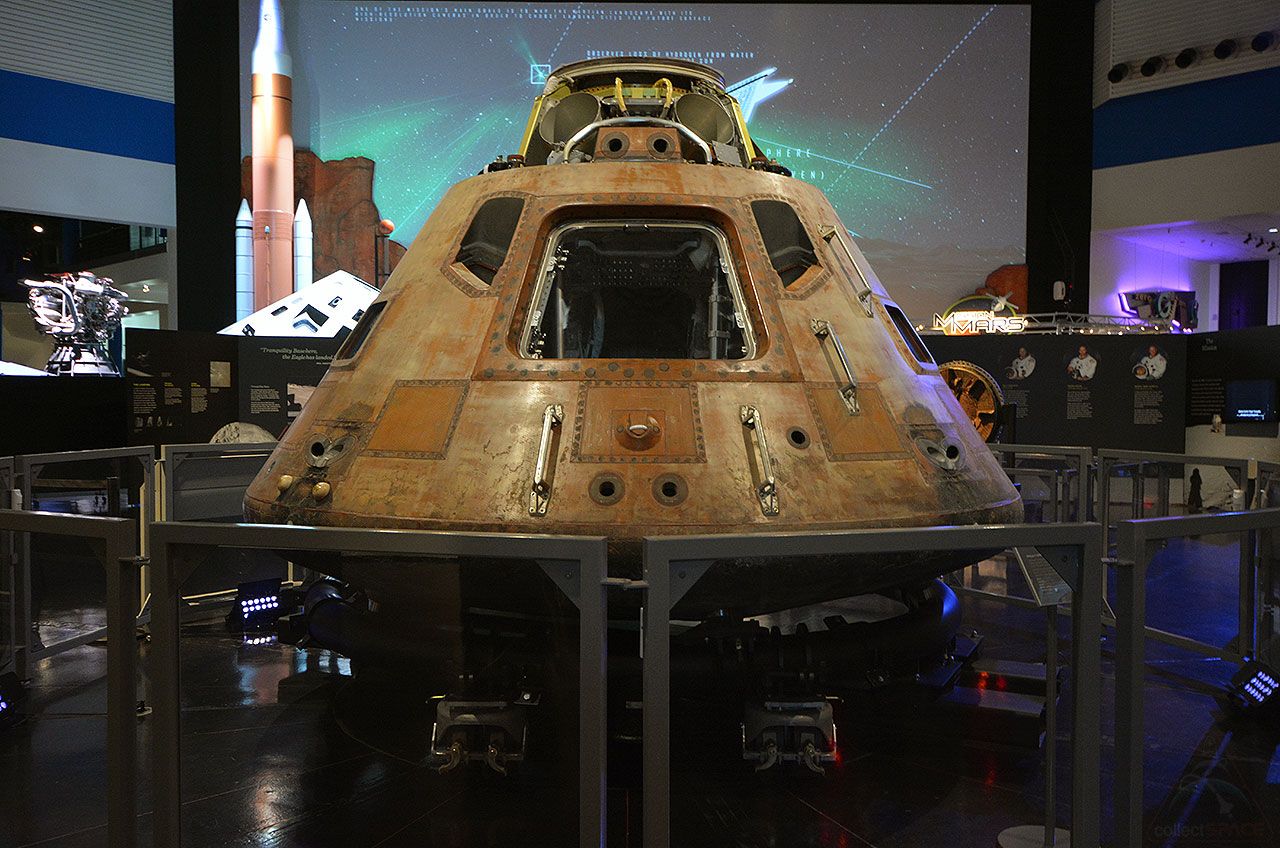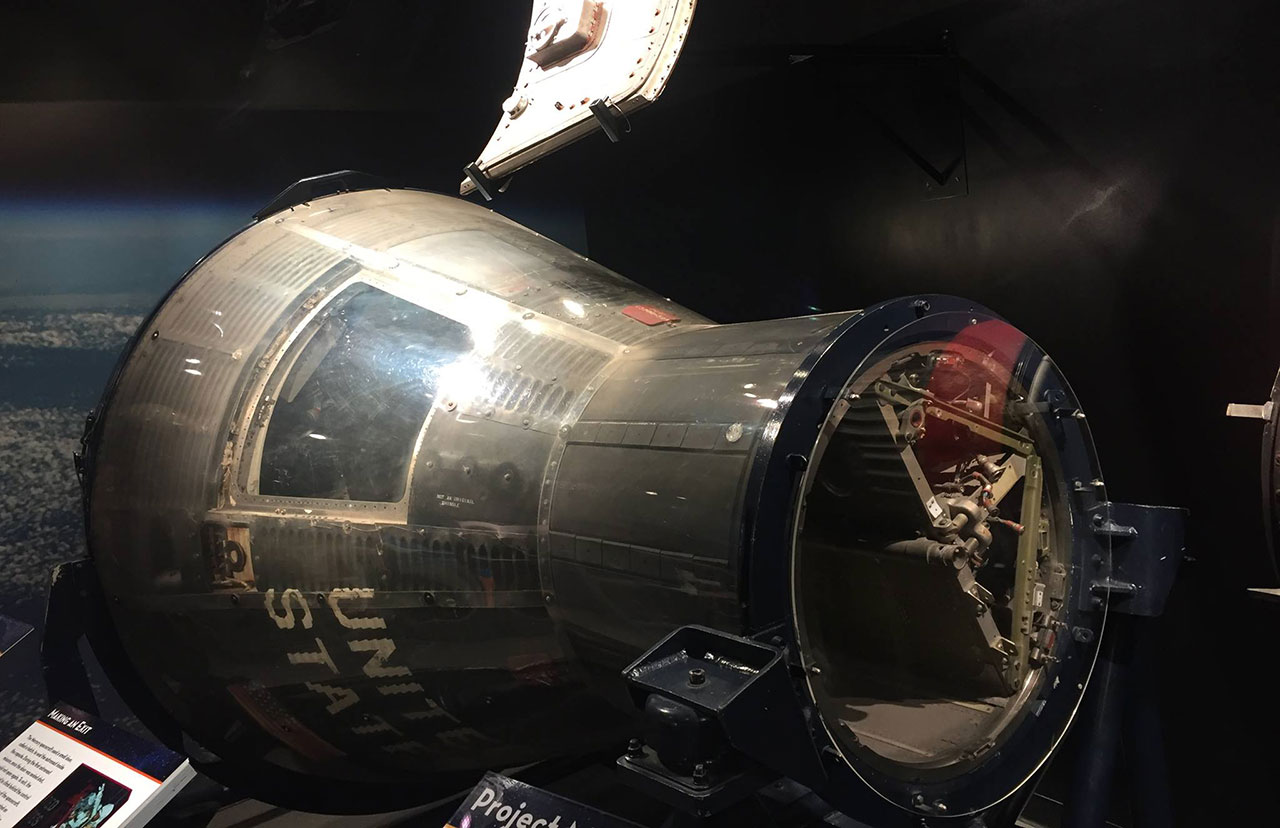Apollo 11 Spacecraft Departing Houston for St. Louis on 'Destination Moon' Tour

HOUSTON — After five months on display in "Space City," the first spacecraft to carry astronauts to land on the moon is now destined for the "Gateway to the West."
Columbia, the command module that took Neil Armstrong, Buzz Aldrin and Michael Collins to the moon and back in 1969, concluded the first leg of a planned three-year tourin Houston, Texas on Sunday (March 18). The ship, which is the centerpiece of the Smithsonian's "Destination Moon: The Apollo 11 Mission" exhibit, will next travel to St. Louis, Missouri, where it will go on display beginning April 14.
"We were honored to have the exhibit," said Tracy Lamm, chief operating officer of Space Center Houston, the visitor center for NASA's Johnson Space Center. "We were just delighted to share this exhibit with folks from around the world and to share something that means so much to our community here." [Moon Memories: Thousands of Apollo Photos Released Online]
The "Destination Moon: The Apollo 11 Mission" tour marks the first time in more than 40 years that Columbia has left the National Air and Space Museum in Washington, DC. The exhibit, which will visit three more cities, including St. Louis, through the 50th anniversary of the Apollo 11 moon landing mission in 2019, opened at Space Center Houston on Oct. 14, 2017.
"It has been great to work with the Smithsonian on this and we were just overjoyed to be able to kick off this four-city tour," Lamm told collectSPACE in an interview. "I could not think of a better place for it to have started than right here in Houston and at Space Center Houston."
The exhibition, which took center stage in Space Center Houston's main plaza, also marked a second homecoming of sorts for Columbia, which was last in Houston following its return from the moon in 1969. Johnson Space Center is home to the mission control that managed the Apollo 11 mission and to NASA's astronaut corps.

"We got to hear from so many people here locally that they had been part of the Apollo program, or they had a parent or grandparent who had been part and they wanted to see what their relatives had worked on," said Lamm.
Get the Space.com Newsletter
Breaking space news, the latest updates on rocket launches, skywatching events and more!
"Or they wanted to come see an icon, because it hasn't been on tour for more than 40 years and who knows when it will go back out on tour again?" he said.
Space Center Houston staff and Smithsonian curators and conservators will carefully pack up the exhibit to begin its road trip to Missouri. For the protection and security of the artifacts, the Smithsonian is keeping the shipment logistics private beyond acknowledging that FedEx is providing the transportation services for the tour.

"Destination Moon," which surrounds Columbia with more than 20 artifacts, including Aldrin's spacesuit helmet and gloves, a moon rock collection box and a Saturn V engine injector plate recovered from the ocean floor, will next be displayed at the Saint Louis Science Center. Like Houston, St. Louis shares a history with the space program.
"St. Louis played a vital role in the Space Race," said Bert Vescolani, president and CEO of the Saint Louis Science Center, "being home to the development of Mercury and Gemini technology and components of the Apollo program. We are honored and privileged to have the opportunity to host this exhibition in St. Louis."
In addition to learning about the first moon landing through the "Destination Moon" exhibit, visitors to the Saint Louis Science Center will also have the chance to see how the surrounding area helped make the achievement possible.
"We are so excited that the Saint Louis Science Center is going to augment the visitor experience with some of our own collections, as well as new exhibits and experiences created by our team," Vescolani said. "Guests will learn the important role that St. Louis played in the Space Race, some historic context on life in the 1960s, an exploration of the future of space travel and [will encounter] interactive experiences that will engage people of all ages."
"Destination Moon: The Apollo 11 Mission" is scheduled to run from April 14 through Sep. 3 at the Saint Louis Science Center. From there it will travel to the Heinz History Center in Pittsburgh, Pennsylvania and then the Museum of Flight in Seattle, Washington, before returning to the National Air and Space Museum in Washington, DC in late 2019.
Columbia and the other artifacts from the traveling exhibit will become part of the new "Destination Moon" permanent gallery at the National Air and Space Museum set to debut in 2020.
Follow collectSPACE.com on Facebook and on Twitter at @collectSPACE. Copyright 2018 collectSPACE.com. All rights reserved.
Join our Space Forums to keep talking space on the latest missions, night sky and more! And if you have a news tip, correction or comment, let us know at: community@space.com.

Robert Pearlman is a space historian, journalist and the founder and editor of collectSPACE.com, a daily news publication and community devoted to space history with a particular focus on how and where space exploration intersects with pop culture. Pearlman is also a contributing writer for Space.com and co-author of "Space Stations: The Art, Science, and Reality of Working in Space” published by Smithsonian Books in 2018.In 2009, he was inducted into the U.S. Space Camp Hall of Fame in Huntsville, Alabama. In 2021, he was honored by the American Astronautical Society with the Ordway Award for Sustained Excellence in Spaceflight History. In 2023, the National Space Club Florida Committee recognized Pearlman with the Kolcum News and Communications Award for excellence in telling the space story along the Space Coast and throughout the world.










